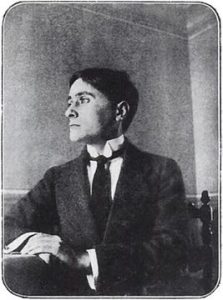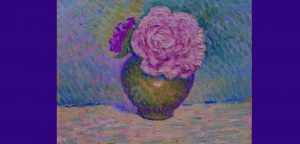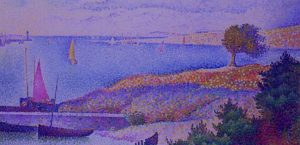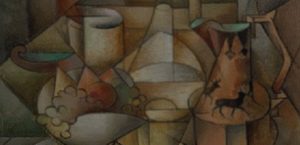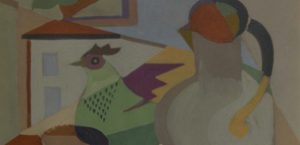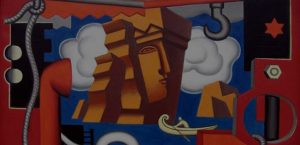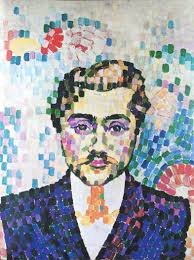Jean Metzinger was born on the 25th of June in 1883 in Nantes, France.
1883 - 1956
Jean Metzinger
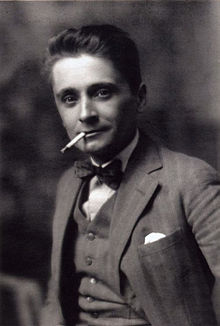
description
A French painter, graphic artist, talented teacher, art critic and writer.
His talent, that manifested itself from the time when the artist was young helped him enter the Academy of Fine Arts in his hometown. Here, Metzinger studied the basics of academic art from talented, though not very well-known portraitist Ippolit Turton. However, very soon he began to show his interest in various avant-garde painting trends in particular, Neo-impressionism.
Jean Metzinger was the leading theoretician of Cubism, who became known for his treatise titled “On Cubism”, written in collaboration with Albert Gleizes. In 1912, the artist was among the founders of the group “Golden Section” – a branch of the Paris School, which consisted of leading Cubist artists and other followers of abstract art. The first show of this group at the exhibition “Salon of Independent” in 1911 caused a great resonance in society. Thanks to the articles on art, teaching activity, and bright individual style, Jean Metzinger became one of the important figures of Abstract art of the early 20th century, and made a great contribution to its distribution throughout Europe and the USA.
Key Ideas:
– In his work, Jean Metzinger was a continuer of the traditions of Pablo Picasso, Georges Braque and other Cubist founders of the style. He used techniques with characteristic straight lines, sharp edges and the geometric forms of Сubism.
– The artist was an adherent of the so-called “analytical cubism”, in which the edges of space and shape are blurred, and the subjects appear in front of the viewer in the most incredible angles.
– In Metzinger painting, his early fascination with pointillism with its clear separation of small color spots, as well as Fauvism, which determines the artist’s choice of a rich and bold color palette, are reflected. While most of the Cubist works differ in some limited shades, the Metzinger’s canvases delight the eye with bright colors and bold combinations of colors.
– In 1911, the artist gradually started departing from analytical Cubism and began to pay more attention to the volume of objects and the combination of different angles inside complex, multifaceted compositions. This type of Cubism was called “Cezanne”, since it was based on the findings of Paul Cezanne, who was the first to apply a few points of view to an object depicted on the same canvas.
– The mature works of Jean Metzinger are carefully verified, slender compositions, where you can see the painstaking work of the author on every detail and see his extraordinary creative intelligence.
– Being one of the main theoreticians of Cubism, the artist attentively controlled the correspondence of his works to the basic concepts of the style. His paintings can be called the ideal embodiment of the art ideas of such founders of the movement as Picasso, Gris, Leger and Braque, a clear example of the possibilities of the style in terms of form, volume, size, relative position and relation between elements, as well as the geometric properties of space itself.
– Art theorists say that Jean Metzinger was the most consistent follower of Cubism, who most fully expressed the idea and essence of this style.
1883
1903
1908
1913
1920
1930 - 1950
1956
The birth of the artist
He moved to Paris
After participating in the exhibition of the Salon of Independent, he sold three of his paintings. For the money from the sale, he moved to Paris, where he began the career of a professional artist. Participated in several exhibitions, including the Autumn Salon and met influential artists: G. Apollinaire, P. Picasso, H. Matisse. In his paintings, the traces of his infatuation with Neo-impressionism are still visible, although the style of the artist’s works gradually changed toward a more abstract manner. Also, Metzinger was engaged in literary activity, which was highly appreciated by his friend Apollinaire. Several of the artist’s poems were published in periodicals in Paris.
Cubism
Joined Cubism. Together with Gleizes and le Fauconnier, participated in the exhibition of the Salon d’Arne in 1910 and the Salon of Independent in 1911. The painter was one of the founders of the group “Golden Section” – an association of abstract artists. In 1912, this group organized its own exhibition, which caused an ambiguous reaction of the public, not familiar with abstract art. In the same year, Metzinger and Gleizes released a treatise on Cubism, which revealed the essence of this trend in painting. Metzinger also published a number of other art research works.
The artist took part in the Autumn Salon
In the period before the First World War, he created many paintings and conducted many exhibitions. The artist took part in the Autumn Salon, exhibited his works at the gallery “Sturm” in Berlin, as well as with Gleizes and Leger at the gallery of Berthe Weill in Paris. In addition, Metzinger’s paintings were shown in the United States. After exhibitions in Milwaukee (1913) and New York (1915), a large number of works were sold to museums and private collections, and the artist’s work gradually became famous and popular. During the war, the artist was drafted into the army and returned to Paris only in 1919.
Metzinger began to introduce mechanical elements
After returning home, he changed his creative style. The artist gradually moved away from Cubism, preferring more realistic works, but at the same time retaining the elements of Cubism in them. Like his colleague Leger, Metzinger began to introduce mechanical elements and scientific symbols into his canvases.
Participated in many exhibitions
Participated in many exhibitions, including those at the galleries of Hanover and Leicester in England, and in Chicago. In 1937, the artist created a large painting for the International Exhibition of Arts and Technology in Paris. Metzinger taught at various educational institutions, such as the Academy de la Palette and the Grande Shamier Academy in the French capital.
The death
He passed away on the 3rd of November in 1956 in Paris, France.
Jean Metzinger
On Artist
flow
Fauvism
Neo-Impressionism
friends
Georges Braque
Pablo Picasso
Fernand Leger
Robert Delone
Juan Gris
artists
Georges Seurat
Henri Cross
Paul Cezanne
Henri Matisse
Andre Derain
By Artist
flow
Futurism
Suprematism
Expressionism
Abstractionism
friends
Albert Gleze
Georges Braque
Robert Delone
artists
Марк Шагал

